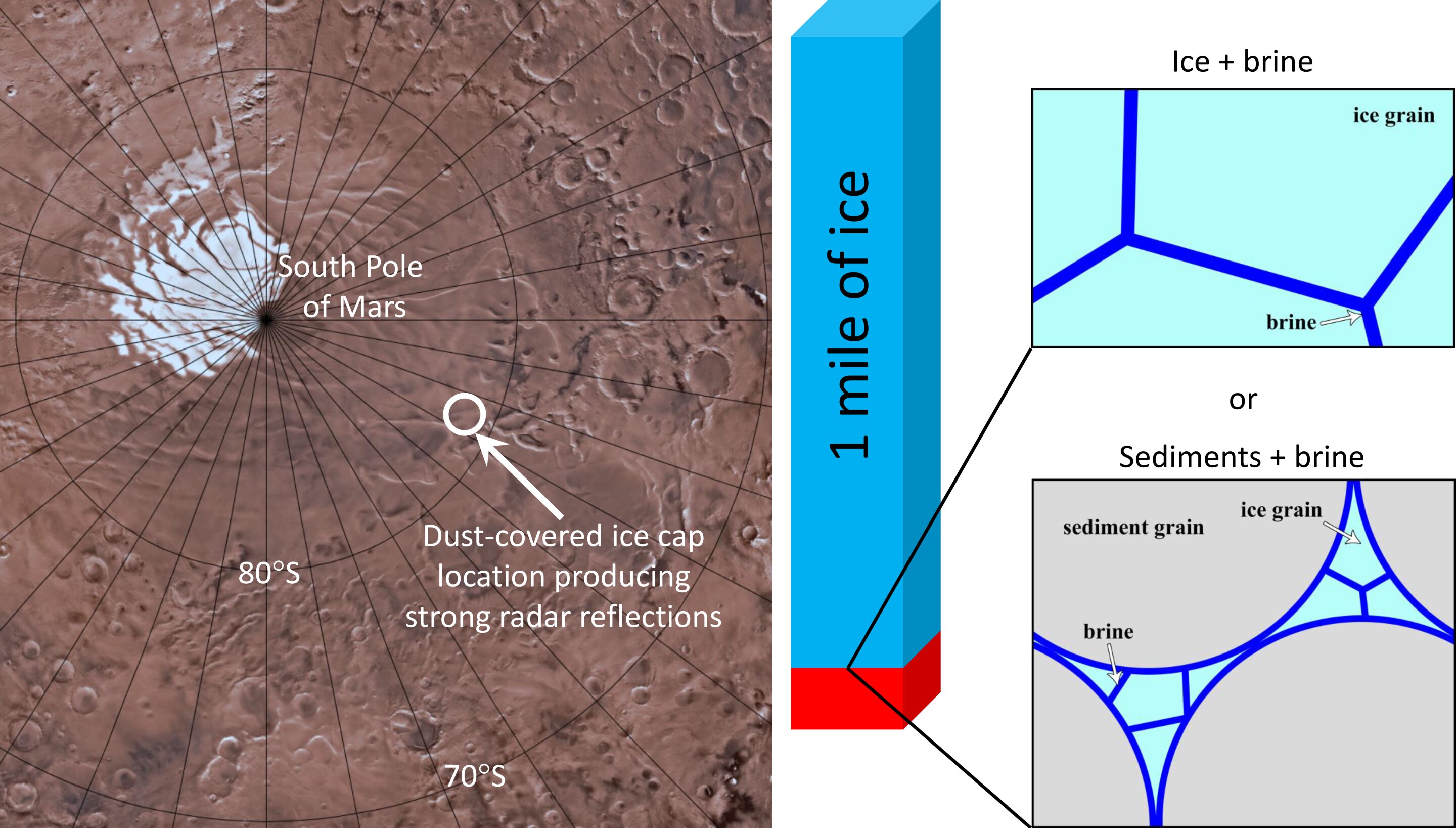One of the questions many people have wondered about at some point or another is the existence of extraterrestrial life. Some answers to what these extraterrestrials life forms would be like are in the form of novels such as The War of Worlds by H.G Wells, in which extraterrestrial life from Mars, Martians, invade Earth. While The War of Worlds is a fictional work, perhaps Martians are not fictional at all? In a recent article on the Earth and Planetary Science Letters journal, a rather shocking question was asked, has the MARSIS radar detected proof of water on mars? For context, the Mars Advanced Radar for Subsurface and Ionosphere Sounding, or MARSIS for short, is an advanced radar attached to a satellite currently orbiting Mars. Recent radar data has shown that odd reflections mimicking the reflections you would find from a scanning of brine water on earth has been found on Mars. Brine water simply means that the water contains salt, so does this mean that water has been found on mars?
On a news outlet PHYSORG, one of the authors, Stillman, says a ice brine mixture or a brine sediment mixture in the Martian ice cap can mimic the reflection found by MARSIS.
Credit: NASA/JPL-Caltech/USGS/SwRI

Description: The image above shows a proposed rendition of the potential water in the South Pole of Mars.
The science behind the claims.
In the recent article titled “Assessing the role of clay and salts on the origin of MARSIS basal bright reflections” , it is stated that the bright basal (bottom layer) reflections detected by the MARSIS radar at the south pole of Mars are similar to scans of earth’s subglacial waters. As the temperature at these locations on Mars are colder than 200K , or negative 73 degrees Celsius, any water found at this temperature is surely frozen, thus any water is in liquid form as a salt solution, or in other words, salt water. Hydrous minerals (minerals containing water) and salts have been found in rocks on Mars ranging back decades, from meteorites and orbital/lander observations. Thus the fact these minerals/salts are known to fragment and otherwise be destroyed allowing them to be spread around as dust means that they will be present in the water ice at the polar caps, such as the southern pole that we discussed earlier.

Description: A picture of frozen salt water on earth in the form of ice on the baltic sea, a similar version is proposed to be hiding underneath the South Pole on Mars by Stillman.
Licence: CanStockPhoto
The heartbreaking conclusion
Through analysis of the dielectric properties, or the ability to have electrons move through the material (thus affecting scans by how reflective they are), Stillman and his colleagues have demonstrated that these well known water containing minerals and clays are not the reason for the reflection found at the southern pole. The revelation of the material responsible for the reflection however is not the sensational discovery everyone had wished it to be. It has been concluded that water is not the identity of the mysterious reflections as at these temperatures (-73 Celsius) where water is completely and totally frozen, reflection from water is actually not that high, instead, the conclusion is that a magnesium and chlorine brine or calcium chlorine brine (In the form of perchlorate) is the true inhabitant of the southern poles of mars. So sadly, there still is no science backing the existence of water on Mars.

License: Wikipedia Commons
Description: Magnesium Perchlorate, one of two brines proposed as the true resident underneath the South Pole in Mars.
-Jonathan Hao
